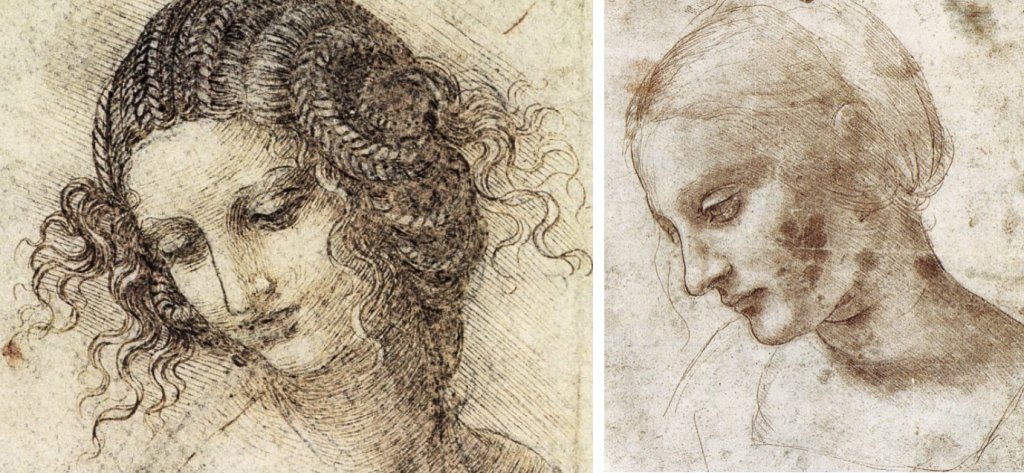da Vinci and the Renaissance 2020 Dashboard
Description
 Da Vinci and the Renaissance is a fully cross-disciplinary study-abroad program that explores the transition from the medieval period to the Renaissance across multiple subjects (art, architecture, engineering, science and more), laying out how much of what we take for granted today about technology or about the human subject were implemented in this rich period, especially in Italy. Our focus will be that most famous “Renaissance man,” Leonardo da Vinci. The course’s interdisciplinary approach asks students to think about the constructed nature of the things we take for granted as “natural” (e.g., time, space, human subjectivity, meaning, sight, knowledge, and law), thus opening our eyes to the significance of cultural differences. We will also consider the many ways that we are now seeing a cultural, ontological, and epistemological shift that is as far-reaching as the one between the medieval period and the Renaissance
Da Vinci and the Renaissance is a fully cross-disciplinary study-abroad program that explores the transition from the medieval period to the Renaissance across multiple subjects (art, architecture, engineering, science and more), laying out how much of what we take for granted today about technology or about the human subject were implemented in this rich period, especially in Italy. Our focus will be that most famous “Renaissance man,” Leonardo da Vinci. The course’s interdisciplinary approach asks students to think about the constructed nature of the things we take for granted as “natural” (e.g., time, space, human subjectivity, meaning, sight, knowledge, and law), thus opening our eyes to the significance of cultural differences. We will also consider the many ways that we are now seeing a cultural, ontological, and epistemological shift that is as far-reaching as the one between the medieval period and the Renaissance
The 3 credits will be split between 8 weeks of instruction at Purdue (1 credit) and our study-abroad program to Venice and Florence (2 credits). In Italy, we will see a number of things that we will have discussed before getting on a plane together. We will also think about the nature of confronting a different culture and of being a tourist in a foreign land.
Galleries, Timelines, and Maps
There is no content in this group.
Individual Entries
Venice is where Leonardo created his designs for the Golden Horn bridge after Leonardo returned from the French incasion of Milan in 1499. He heard of the bid for the bridge from Turkish merchants in Venice at the time. Leonardo used his previous knowledge of geometry to design the bridge, including the parabolic curve, pressed bow, and keystone arch to stabilize the bridge despite it not having support beams.
Chandler, David L. “Engineers Put Leonardo Da Vinci's Bridge Design to the Test.” MIT News, Massachusetts Institute of Technology, 9 Oct. 2019, news.mit.edu/2019/leonardo-da-vinci-bridge-test-1010.
... moreThis is the location of Da VInci's Golden Horn bridge design. The design was requested by Sultan Bayezid II to connect Instanbul to Galata. The city was taken from Byzantium in 1453, and the Ottomons were adding more infrastructure to the city. The location of the bridge would probably be where the modern bridge called Halic on the map below is located. This would not connect Europe and Asia, but simply Instanbul with its neighboring town. Leonardo’s design was not selected as he provided only the designs and no instructions on how to build it. Leonardo also proposed a cable bridge across the Bosphorus Strait, which would have connected the two continents. This second bridge was not requested by the Sultan.Today, several cable bridges cross the strait.
In October 2019, engineers at MIT decided to test DaVinci’s design with a scaled model. The team built a model with a 1:500 scale, resulting in a 32-inch model. The model used materials that the engineers assumed would be used, such as stone and lacked the use of mortar. The engineers concluded that the design would have worked and would have been capable of surviving even earthquakes, but do not know how much of it was intentional and how much was pure coincidence of his choice. Either way, this demonstrates Leonardo’s understanding of geometry.
Over 500 years since da Vinci wrote his theories on tree branching in his notebook, pysicist Christopher Eloy put da Vinci's hypotheses to the test. The department of Aerospace and Mechanical Engineering at the University of California, San Diego funded Eloy's investigation into how the principal of tree branching could be applied to other mechanical structures to ensure they are sound in heavy wind. Eloy used da Vinci's model to map the flow of wind around the surface area of trees and the associated tensor forces. Eloy's publication inspired other physicists across the globe to dive deeper into da Vinci's theories on tree growth.
Sources
Eloy, Christophe. “Leonardo’s Rule, Self-Similarity, and Wind-Induced Stresses in Trees.” Physical Review Letters, vol. 107, no. 25, Dec. 2011, doi:10.1103/physrevlett.107.258101.
Palca, Joe. “The Wisdom Of Trees (Leonardo Da Vinci Knew It).” NPR, NPR, 26 Dec....
more